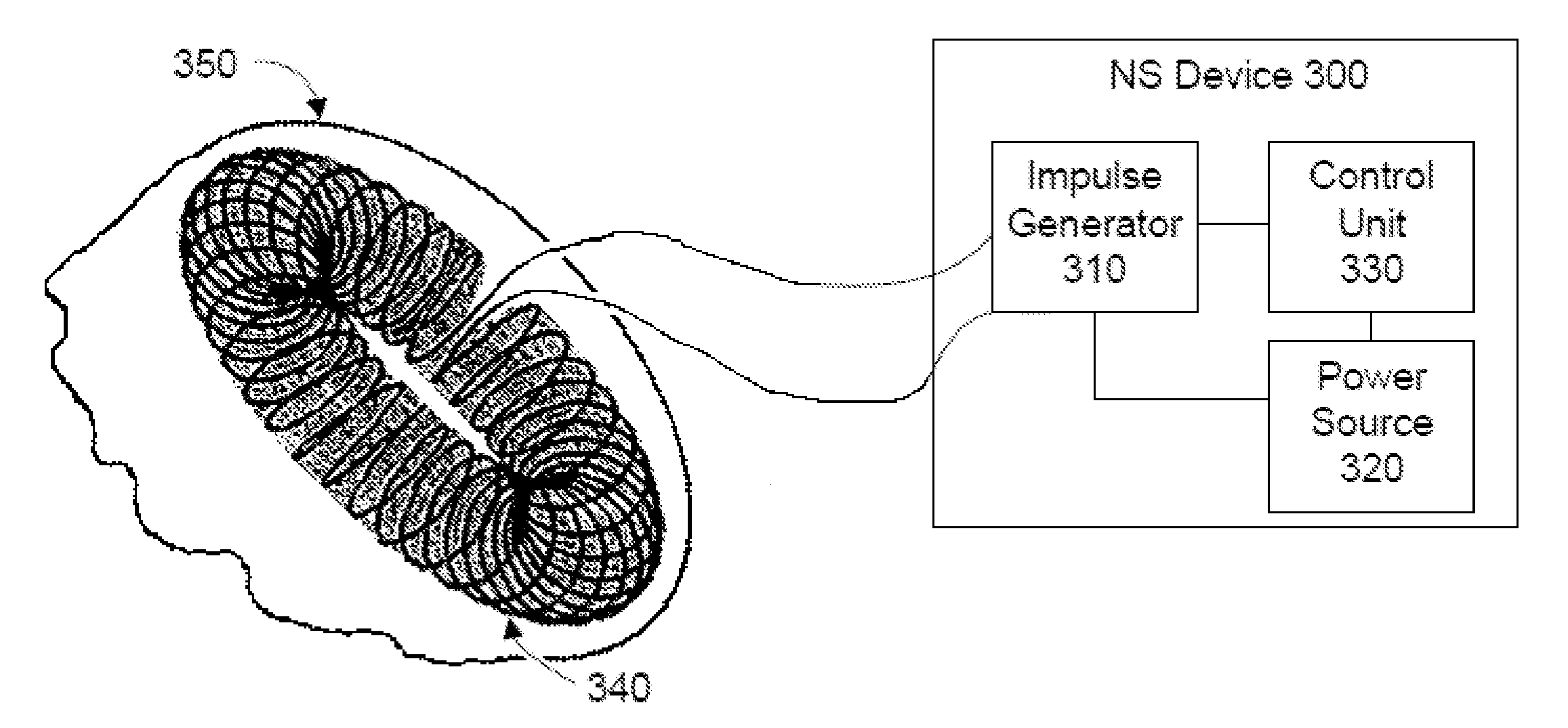While there are a variety of different techniques and mechanisms that have been designed to focus lesioning directly onto the target nerve tissue, collateral damage is inevitable.
In many cases, these medicinal approaches have side effects that are either unknown or quite significant.
For example, at least one popular diet
pill of the late 1990's was subsequently found to cause heart attacks and strokes.
Unfortunately, the beneficial outcomes of
surgery and medicines are, therefore, often realized at the cost of function of other tissues, or risks of side effects.
Furthermore,
acupuncture endeavors to produce effects that are not contemplated by modern
western medicine, such as the de qi
sensation, and results using
acupuncture may be confounded by the individualized selection of meridian points, as well as by the simultaneous treatment with herbal medicines.
However, a non-invasive radiological procedure may be a component of a larger procedure having invasive components.
For example, a component of the procedure is invasive when the formation of an image or delivery of energy relies on the presence of a contrast agent,
enhancer, tissue-specific
label or radioactive emitter that is inserted into the patient with a
hypodermic needle.
Over time, this
inflammation can lead to scarring of the airways and a further reduction in
airflow.
This
inflammation leads to the airways becoming more irritable, which may cause an increase in coughing and increased susceptibility to
asthma episodes.
For some patients, however, these medications, and even the bronchodilators are insufficient to stop the constriction of their bronchial passages, and more than five thousand people suffocate and die every year as a result of
asthma attacks.
Yet all are mediated by a series of hypersensitivity responses that result in uncontrollable
airway occlusion driven by
smooth muscle constriction, and dramatic hypotension that leads to shock.
Cardiovascular failure, multiple organ
ischemia, and asphyxiation are the most dangerous consequences of
anaphylaxis.
Tragically, many of these patients are fully aware of the severity of their condition, and die while struggling in vain to manage the
attack medically.
For example,
epinephrine is not always available for immediate injection.
Even in cases where medication and attention is available,
life saving measures are often frustrated because of the nature of the symptoms.
This cardiovascular stress can result in
tachycardia, heart attacks and strokes.
COPD is a progressive
disease that makes it hard for the patient to breathe.
COPD can cause coughing that produces large amounts of
mucus, wheezing, shortness of breath,
chest tightness and other symptoms.
In emphysema, the walls between many of the
air sacs are damaged, causing them to lose their shape and become floppy.
This damage also can destroy the walls of the
air sacs, leading to fewer and larger
air sacs instead of many tiny ones.
This causes the lining to thicken and form thick
mucus, making it hard to breathe.
Many of these patients also experience periodic episodes of acute
airway reactivity (i.e., acute exacerbations), wherein the
smooth muscle surrounding the airways goes into spasm, resulting in further constriction and
inflammation of the airways.
Frequent acute exacerbations of
COPD cause
lung function to deteriorate quickly, and patients never recover to the condition they were in before the last
exacerbation.
Similar to asthma, current medical management of these acute exacerbations is often insufficient.
Unlike cardiac arrhythmias, which can be treated chronically with pacemaker technology, or in emergent situations with equipment like defibrillators (implantable and external), there is virtually no commercially available
medical equipment that can chronically reduce the baseline sensitivity of the
smooth muscle tissue in the airways to reduce the predisposition to asthma attacks, reduce the symptoms of COPD or to break the cycle of bronchial constriction associated with an acute
asthma attack or anaphylaxis.
 Login to View More
Login to View More  Login to View More
Login to View More 


